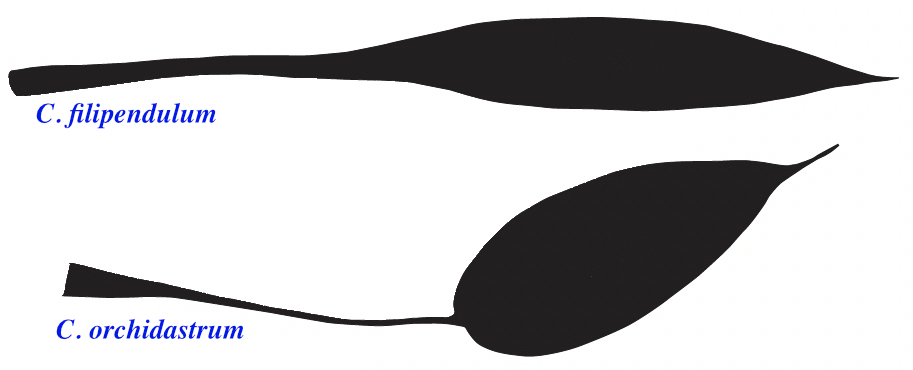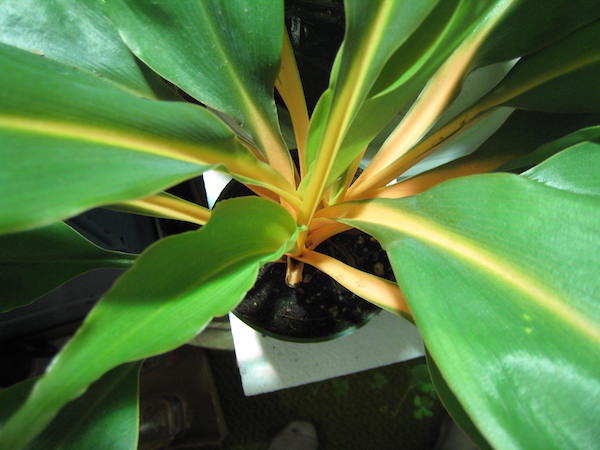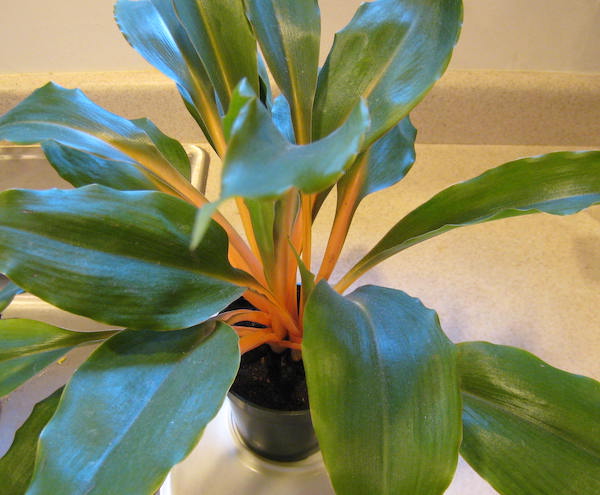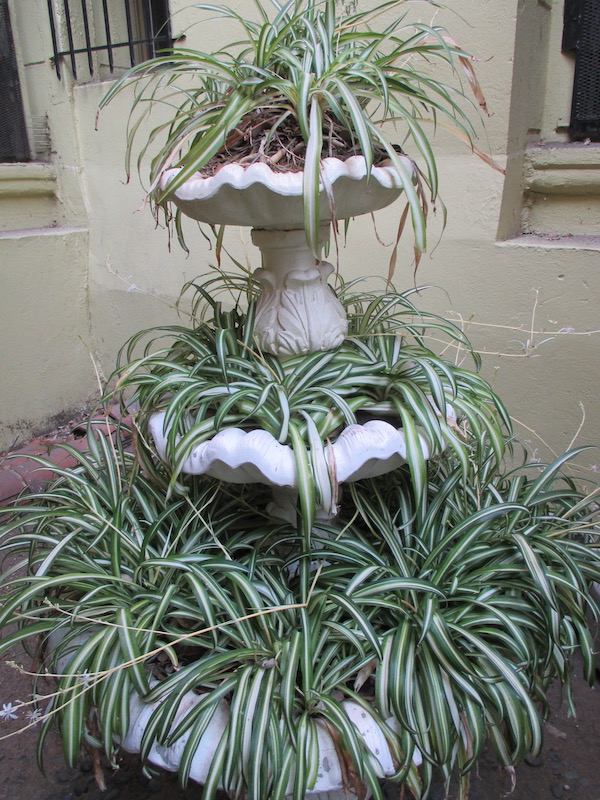Plant of the Month: January 2025
|
| Fire Flash |
| Chlorophytum filipendulum ssp. amaniense (Engl.) Nordal & A.D. Poulsen 1998 |
| = Chlorophytum amaniense Engl. |
| = Chlorophytum orchidantheroides hort. |
| = Chlorophytum orchidastrum hort., non Lindl. 1824 |
ASPARAGACEÆ; Asparagus Family
|
| Since the late 1990s, this Spider Plant cousin has been grown commonly as a houseplant, because it is strikingly colorful, easy to propagate and grow. But almost every website and nursery catalog I see has its scientific name incorrect, hence this article. Even if one goes to the reputable Plants of the World Online website, and goes to its entry for Chlorophytum orchidastrum, it has a photo of Fire Flash! By & by someone there may see this article and fix that error. |
| The genus Chlorophytum consists of 200 species of tropical & subtropical Old World (African mostly) perennial plants of rainforests, dry forests & grasslands. Only 1 species, cultivated rarely, has a woody stem: C. suffruticosum. Chlorophytum roots are variously fibrous, tuberous or rhizomatous. Leaves are grasslike or wider, from a rosette; with clasping stems. Flowers are small, 6-parted and star-shaped; greenish-white, yellowish-white or pure white. People grow at least 6 species for foliage --their floral beauty is relatively minor. |
| Botanists struggle with Chlorophytum specific determination and name application; it is a difficult genus. Various species are prized highly medicinally for their saponins. Over dozen species are reported edible; they afford few calories or flavor, and can be chewy. |
| The most common Chlorophytum is the well known Spider Plant, also called Airplane or Ribbon Plant, St Bernard's Lily, Spider Ivy, Walking Anthericum, Green Lily, or Lasso of Love. In science it is Chlorophytum comosum. |
| My subject this month, known as Fire Flash, is also called Fire Glory, Mandarin Plant, Tangerine, Sierra Leone Lily, Orange Spider-Plant, Green-Orange Spider-Plant, Orchid Spider-Plant, or East Africa Spider-Plant. It is native from SE Kenya to E Tanzania (including Zanzibar). Its leaves measure up to 13 inches long by 3.5 inches wide, with bright orange-pink to coral midribs/stems. Flowers are white in a dense cylindrical cluster to 5 inches high, partly hidden by foliage. |
Chlorophytum orchidastrum in contrast, is not cultivated; its leaves are are not winsomely colorful, and have markedly slender stems; it is native to tropical W & C Africa. Unless a broad or lumping view is adopted, India & Asian plants called Chlorophytum orchidastrum are really other spp.: C. glaucum, C. Nimmonii, or C. malayense. To show you how wrong it is to confuse what species Fire Flash belongs to, I reproduce leaf outlines in the graphic below, adapted from a scientific paper titled A phenetic analysis and revision of Guineo-Congolean rain forest taxa of Chlorophytum (Anthericaceae) by A.D. Poulsen & I. Nordal in the Botanical Journal of the Linnean Society 2005
Back |

Chlorophytum filipendulum above and Chlorophytum orchidastrum below
|

Chlorophytum filipendulum in a small pot ; photo by ALJ
|

Chlorophytum filipendulum in a small pot ; photo by ALJ
|

Chlorophytum comosum variegated cultivar ; photo by ALJ
|
|
|

